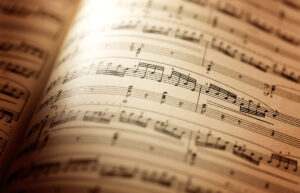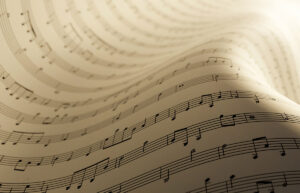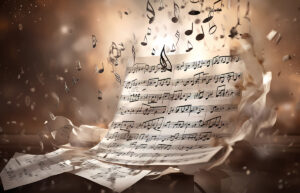What is Tempo in Music: Meaning, Types, Genres & More

Welcome to the world where time dances to the beats of melodies! Ever wondered, what is tempo in music? Tempo in music is like the conductor of a grand orchestra, dictating the pace, energy, and mood of a musical piece. Just as our heartbeat sets the rhythm of life, tempo sets the pulse of a song.
Join us on this rhythmic journey as we explore how tempo, the heartbeat of music, shapes emotions, influences our toe-tapping responses, and transcends boundaries to resonate within our souls. Get ready to tap, sway, and discover the vibrant world of musical tempo!
Welcome to TheDemoStop, now join the community!
Connect with artists, fans and producers around the world.
What is tempo in music?
So, when it comes to what is tempo in music, tempo refers to the speed or pace at which a piece of music is played or sung. It establishes rhythm and timing, shaping the overall feel and mood of a composition.
Measured in beats per minute (BPM), tempo guides musicians and listeners through the pace of a musical passage, whether it’s slow and relaxed (e.g., Adagio), moderately paced (e.g., Andante), or brisk and lively (e.g., Allegro). It’s a crucial element in shaping the emotional impact and energy of a musical performance.
Importance of tempo in music
The importance of tempo in music, central to grasping what is tempo in music, goes far beyond just indicating speed. Tempo acts as the rhythmic foundation, shaping the entire emotional landscape of a musical piece. It dictates the mood, intensity, and overall vibe, serving as a potent conveyor of emotions.
Slower tempos, like adagio, can evoke feelings of calm, melancholy, or introspection, fostering deep emotional connections. Conversely, faster tempos, such as allegro or presto, inject vitality, excitement, and urgency, driving listeners into an energetic and dynamic journey.
Tempo acts as a compass, influencing listeners’ physical responses, heartbeat, breathing, and even movement, making it a crucial tool for musicians to convey their artistic visions and for audiences to connect profoundly with the music on a visceral level.
Across classical symphonies, contemporary pop tracks, and every genre in between, tempo remains a foundational element intricately woven into the fabric of musical expression.
Different tempos
Understanding the various types of tempos is essential for deciphering what is tempo in music. Tempo encompasses a wide range of speeds, each with its own unique character and effect on the mood and feel of a musical piece.
Grave
Grave, with a tempo range of about 20 to 40 BPM, establishes an exceptionally slow pace in music. It’s typically used for compositions that demand gravity, solemnity, and profound emotional impact. Often heard in funeral marches or parts requiring contemplation and reflection, Grave allows musicians to delve into deep emotional depth, highlighting the weight and significance of each note.
Lento
Lento, characterized by a very slow tempo ranging from approximately 45 to 60 BPM, infuses musical compositions with a deliberate and measured pace. This tempo is commonly chosen for pieces requiring careful expression and thoughtful interpretation. Lent is often featured in the slow movements of classical sonatas, adagios, or any musical context where a methodical and unhurried approach is preferred.
Largo
Largo, characterized by a slow and stately tempo ranging from approximately 40 to 60 BPM, imparts a sense of grandeur and expansiveness to music. Compositions marked by Largo often feature expressive phrasing, allowing musicians to delve into the emotional depth of each note. This tempo finds its place in slow movements of symphonies or pieces where a majestic atmosphere is sought.
Adagio
Adagio, typically ranging from 66 to 76 BPM, denotes a slow tempo, though faster than Largo. This tempo evokes a serene and unhurried ambiance, fostering nuanced expression and emotional depth. Often featured in the slow movements of Romantic-era pieces, Adagio offers both performers and listeners a tranquil space for reflection.
Andante
Andante, meaning “walking pace” and typically ranging from 76 to 108 beats per minute (BPM), offers a blend of moderately slow tempo and smooth flow. Its versatility makes it a popular choice for its comfortable and expressive nature, fitting seamlessly into various musical settings. You’ll often find Andante used in the second movements of symphonies or in Andante sections within classical compositions.
Moderato
Moderato, indicating a moderate tempo ranging from approximately 108 to 120 BPM, offers the music a steady and controlled pace. This versatile tempo is widely used across different genres and contexts, providing a balanced and measured feel. It is particularly suitable for classical minuets and dance movements, enhancing stability and clarity in performance.
Allegretto
Allegretto, translating to “a little lively,” typically falls between 116 to 120 beats per minute (BPM). It’s slightly slower than Allegro, maintaining a cheerful and light-hearted feel while still ensuring control and clarity. Allegretto is favored for its playful nature, often found in scherzos and sections requiring a spirited yet measured approach in classical and romantic compositions.
Allegro
Allegro, characterized by its lively tempo ranging from approximately 120 to 168 BPM, is a widely used tempo marking in music. It exudes energy and enthusiasm, driving the music forward with vivacity. Allegro is often found in the brisk movements of symphonies and spirited sections of sonatas, demanding a dynamic and engaging performance.
Vivace
Vivace, translating to “lively” or “vivid,” falls within the BPM range of approximately 168 to 176. This tempo infuses music with enthusiasm and vibrancy, fostering a lively atmosphere. Vivace is frequently selected for its spirited and dynamic characteristics, enhancing the overall energy of a piece. It is commonly found in lively dance movements and sections that demand an animated and energetic interpretation.
Presto
Presto, a tempo indicating very fast music with a BPM range of about 168 to 200, injects urgency and intensity into musical pieces. Musicians face technical challenges due to their rapid pace, often found in symphonic finales and passages requiring virtuosic skill, contributing to an exhilarating and dynamic musical journey.
Prestissimo
“Prestissimo,” translating to “Very fast” and surpassing 200 BPM, signifies an exceptionally rapid tempo. Reserved for the most challenging musical passages, Prestissimo requires performers to demonstrate exceptional speed and virtuosity. It commonly appears in swift and technically demanding sections of compositions, especially in contemporary and avant-garde music, where pushing the limits of speed is a key aspect of musical expression.
Welcome to TheDemoStop, now join the community!
Connect with artists, fans and producers around the world.
Tempo markings in music
Italian tempo marking
| Grave Very Slow, Solemnly | 25-45 BPM |
| Largo Broadly | 40-60 BPM |
| Lento Slowly | 45-60 BPM |
| Adagio Slowly, With Great Expression | 66-76 BPM |
| Andante at a Walking Pace | 76-108 BPM |
| Moderato at a Moderate Speed | 98-112 BPM |
| Allegro Fast, Quickly, and Bright | 120-156 BPM |
French tempo marking
| Grave | Slowly and Solemnly |
| Lent | Slowly |
| Modere | At a Moderate Tempo |
| Rapide | Fast |
| Vif | Lively |
| Vite | Fast |
German tempo marking
| Kräftig | Vigorous and Powerful |
| Langsam | Slowly |
| Lebhaft | Lively (Mood) |
| Mäßig | Moderately |
| Rasch | Quickly |
How to identify tempo in music?
Counting BPM (Beats Per Minute)
Count the number of beats (pulses) within a minute to determine the tempo. Start by identifying a prominent beat or pulse in the music, then count how many beats occur in 60 seconds. For example, count the number of quarter notes (or the equivalent) you hear in a minute to calculate the BPM (Beats Per Minute).
Use a metronome
A metronome is a device that produces regular ticks or beats at a specific tempo. You can identify the tempo by matching the beats of the metronome with the beats in the music. Start the metronome at a known tempo and adjust its speed until it aligns perfectly with the music, then note the indicated BPM.
Look at your watch
By keeping an eye on your watch or a clock with a second hand while listening to the music, you can count the beats within a 15-second or 30-second interval and multiply to estimate the BPM for a minute.
Memorize a few songs
Familiarizing yourself with the tempos of specific songs can help you recognize and gauge tempos more easily over time. By knowing the BPM of certain songs and their corresponding tempo markings, you can use them as references to identify similar tempos in other pieces.
Look for tempo markings
Many musical compositions include tempo markings written by the composer to indicate the desired speed or tempo of the piece. These markings, such as “Allegro,” “Adagio,” or specific BPM indications, offer valuable guidance for understanding the intended tempo of the music.
Apps available to find tempo in music
- BPM Counter App– Analyzes song rhythm for BPM
- BPM Detect– Real-time BPM detection via microphone
- Beat Finder– Visualizes song beats and calculates BPM
- Song Tempo– Tap or record for accurate BPM
- Tap Tempo– Single tap-along BPM estimation
Tempo in different genres of music
Examining tempo in various music genres provides valuable insight into what is tempo in music. Each genre uniquely employs tempo, contributing to its distinctive sound and character.
Hip hop
Hip hop music generally operates within the range of 85 to 95 BPM. This tempo provides a steady yet relaxed rhythm, often characterized by strong beats and rhythmic patterns, allowing for the delivery of rap verses and dynamic grooves.
Techno
Techno music is known for its electronic and repetitive beats, usually falling within a range that varies more widely compared to other genres. Techno can range from around 120 BPM for slower, more atmospheric tracks to 150 BPM or higher for more energetic and intense compositions.
House
House music typically ranges between approximately 118 to 135 BPM. It features a four-on-the-floor beat, emphasizing the kick drum on each beat, promoting a consistent and danceable rhythm. House music often incorporates melodic elements and repetitive basslines.
Electro
Electro music encompasses various subgenres, and its tempo can vary widely. It often operates within the 120 to 130 BPM range, blending electronic elements with diverse rhythms, basslines, and synthesizers to create an energetic and lively atmosphere.
Dubstep
Dubstep is characterized by its heavy basslines, syncopated rhythms, and intense drops. The tempo typically ranges from around 138 to 142 BPM, although some tracks might fall slightly higher or lower. Dubstep’s rhythmic patterns and emphasis on bass create a unique and dynamic sonic experience.
Drum and Bass
Drum and Bass (DnB) music is known for its rapid breakbeats, syncopated rhythms, and fast-paced energy. It generally operates within a wide range, averaging 160 to 180 BPM, though some racks might exceed this range. DnB’s high tempo creates an intense and frantic vibe, often favored in club and raw settings.
Welcome to TheDemoStop, now join the community!
Connect with artists, fans and producers around the world.
Conclusion
What is tempo in music?
Tempo in music denotes the rate or speed at which a musical piece progresses. It sets the rhythm and pace, influencing the overall mood and feel of the music. This rhythmic element is measured in BPM and acts as a fundamental guide for performers, determining how fast or slow the notes, beats, or phrases are played or snug within a composition.
Importance of tempo in music
Tempo in music is crucial as it establishes the pace, mood, and emotional resonance of a musical piece, guiding performers, shaping listener engagement, and conveying the intended expression and atmosphere of the composition.
Different tempo
- Grave
- Lent
- Largo
- Adagio
- Andante
- Moderato
- Allegretto
- Allegro
- Vivace
- Presto
- Prestissimo
Tempo markings in music
- Italian tempo marking
- French tempo marking
- German tempo marking
How to identify tempo in music?
- Counting BPM
- Find a metronome
- Look at your watch
- Memorize a few songs
- Look for tempo markings
- Apps available to find tempo in music
How is tempo used in music?
Tempo in music is utilized to set the rhythm, pace, and emotional feel of a composition, guiding performers in their execution, enabling dancers to synchronize movements, aiding listeners in engaging with music, and communicating the intended mood and expression by composers.
Tempo in different genres of music
- Hip hop: 85-95 BPM
- Techno: 120-150 BPM
- House: 118-135 BPM
- Dubstep: 138-142 BPM
- Drum and Bass: 160-180 BPM
FAQs
What is tempo in music?
Tempo in music refers to the speed or pace of a piece, measured in Beats Per Minute (BPM). It sets the rhythm and overall feel, impacting the emotional energy of a composition.
Why is tempo in music important?
Tempo in music is crucial because it sets the rhythm, helps convey emotions, assists performers in staying synchronized, affects dance movements, and draws listeners into the musical journey.
What are different types of tempo?
- Grave
- Lent
- Largo
- Adagio
- Andante
- Moderato
- Allegretto
- Allegro
- Vivace
- Presto
- Prestissimo
What are tempo markings in music?
Tempo markings in music are notations or instructions by composers indicating the desired speed or pace of a musical piece.
What are Italian tempo markings?
| Grave Very Slow, Solemnly | 25-45 BPM |
| Largo Broadly | 40-60 BPM |
| Lento Slowly | 45-60 BPM |
| Adagio Slowly, With Great Expression | 66-76 BPM |
| Andante at a Walking Pace | 76-108 BPM |
| Moderato at a Moderate Speed | 98-112 BPM |
| Allegro Fast, Quickly, and Bright | 120-156 BPM |
Which are German tempo markings?
| Kräftig | Vigorous and Powerful |
| Langsam | Slowly |
| Lebhaft | Lively (Mood) |
| Mäßig | Moderately |
| Rasch | Quickly |
Which are French tempo markings?
| Grave | Slowly and Solemnly |
| Lent | Slowly |
| Modere | At a Moderate Tempo |
| Rapide | Fast |
| Vif | Lively |
| Vite | Fast |
What is Allegro tempo?
Allegro tempo signifies a lively, fast pace in music, often leading to energetic performances. It’s a tempo that guides the rhythm and injects energy into musical compositions.
What is Presto tempo?
Presto tempo denotes an exceptionally fast pace in music, encouraging lively and rapid performances. It’s the highest speed marking, demanding virtuosic skill and delivering an electrifying performance.
What is Andante tempo?
Andante tempo indicates a moderately slow pace in music, suggesting a comfortable and flowing rhythm, neither too brisk nor too sluggish. It guides performers with its steady beat while allowing for expressive interpretation.
How to identify tempo in music?
- Counting BPM
- Use a metronome
- Look at your watch
- Memorize a few songs
- Look for tempo markings
- Apps available to find tempo in music
What are the apps available to find tempo in songs?
- BPM Counter App
- BPM Detect
- Beat Finder
- Song Tempo
- Tap Tempo
What are the tempos in different genres of music?
- Hip hop: 85-95 BPM
- Techno: 120-150 BPM
- House: 118-135 BPM
- Dubstep: 138-142 BPM
- Drum and Bass: 160-180 BPM































































